Category Archives: Fish
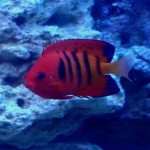
Dwarf Flame Angelfish
The below Dwarf Flame Angelfish profile is based on what I have learned and observed. They certainly are very colorful fish to keep and will add a lot of viewing pleasure to a properly set-up aquarium.
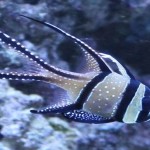
Banggai Cardinalfish
The below profile is on another one of the interesting Cardinal fish that I have kept. This informationon Banggai Cardinalfish is based on what I have learned and observed.
Common Name: Banggai Cardinalfish, Kaudern’s Cardinal Banggai Cardinalfish or Longfin Cardinalfish
Scientific Name: Pterapogon kauderni
Reef Safe: Yes
Temperament: Peaceful
Care Level: Moderate
Max Size: 3 inches
Appearance:
They are a smaller fish, silver in color with black strips containing some white spots. They have very long and striking fins in comparison to their bodies. There appreance have made them very popular to keep in a home aquarium, The below are a few pictures of some of my Banggai Cardinals
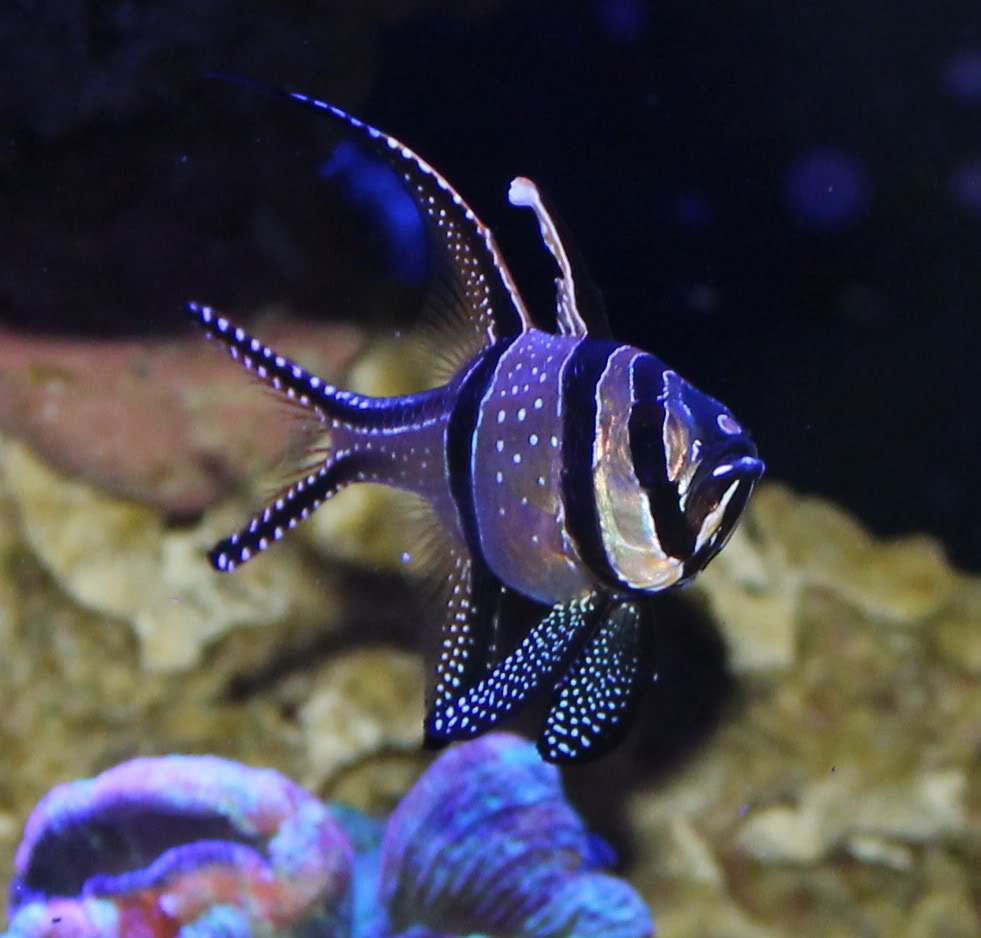
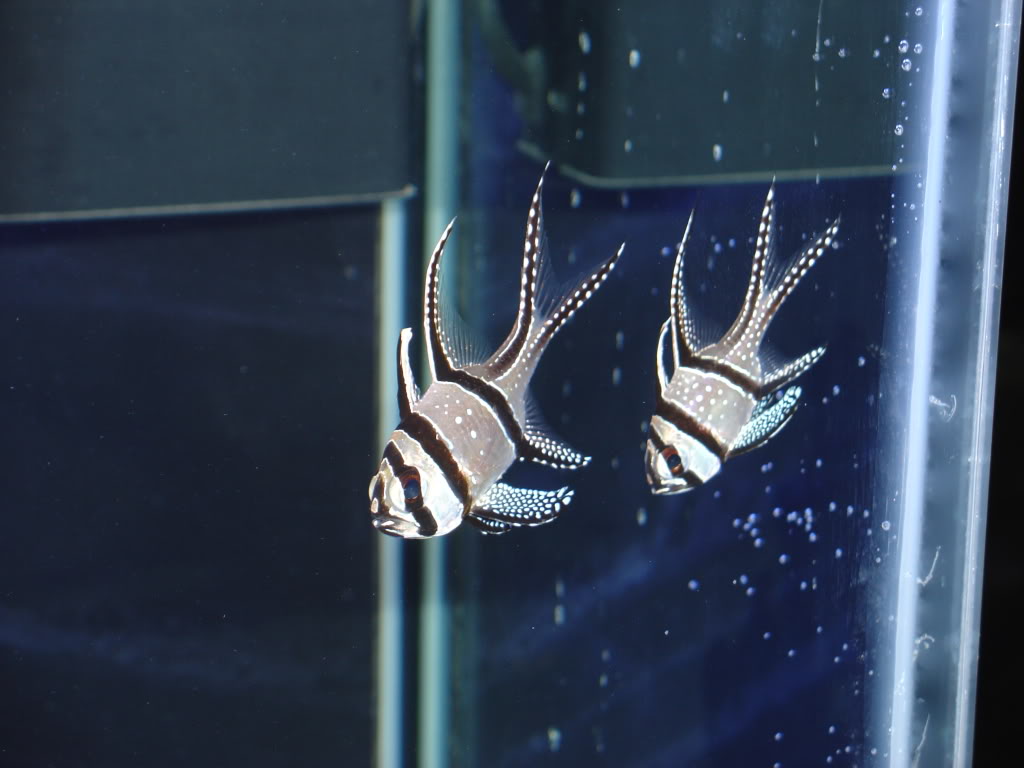
Environment and Temperament
I would suggest a tank size in the range of a 36 inch long 35 gallon aquarium. Others would suggest a standard 29 gallon tank for Banggai Cardinals, but I just feel due to the long fins they would need a little more room.
You can keep multiple Banggia Cardinals in one tank. However, if you end up with a mated pair they will most likely become territorial and act aggressively towards any other Banggai Cardinal that get close.
Recommended water conditions / parameters:
I would refer you to the below article for the typical water conditions that Cardinal fish will do best in:
https://www.reefaquarium.com/2013/the-basics-of-marine-aquarium-water-parameters/
Diet
Being carnivores, they will do best when offered a wide range of different meaty foods
Breeding
The Banggai Cardinals are easy to breed once a mated pair forms. They have often been referred to as the guppies of the marine aquarium. They are also mouth breeders as the male carries the eggs in his mouth to protect them. The ease of breeding this fish has led to tank bred and raised stock becoming more and more dominant in the hobby helping to protect wild populations
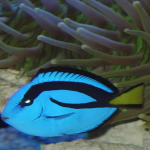
Hippo Tangs
The below profile is on another one of the interesting tangs that I have kept. This information Hippo Tangs is based on what I have learned and observed.
Common Name: Hippo Tang, Regal Tang, Blue Tang, Palette Surgeonfish
Scientific Name: Paracanthurus hepatus
Reef Safe: Yes
Temperament: Peaceful for the most part
Care Level: Moderate
Max Size: 12 inches (9 to 10 inches is more common)
Continue reading
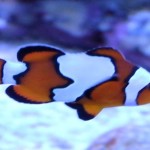
Ocellaris ClownFish
The below Ocellaris ClownFish profile is based on what I have learned and observed. They certainly are great little fish to keep and will add a lot of viewing pleasure to any aquarium.
Continue reading

Marine Ich (Cryptocaryon Irritants)
What is Marine Ich ???
Marine ich (sometimes call white spot disease) is among the more common viruses in the hobby today. It can also be one of the more frustrating situations to deal with. A large part of this frustration happens when people do not completely understanding the life cycle of this virus. The below diagram shows the life cycle of the ich virus.
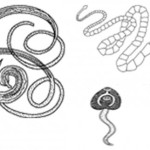
Parasites in Marine Fish
Most of the marine fish that we keep come from the wild. It isn’t unusual for these fish to have internal problems such as worms, or even bacterial or parasitic infection in their intestinal track. External parasites are also just as common, if not possible more. I have read that it is estimated that as much as 30% of the marine fish in the wild have some kind of intestinal infection.
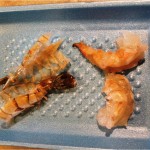
Feeding High Quality Froozen Foods
I thought I would take some time to explain how I prepare the raw foods that I feed to my carnivorous / predator fish and my anemones. This results in a higher quality food for less cost than purchased frozen fish foods.
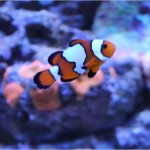
Good Starter Fish and Clean-up Crew Options
So, now after deciding to set-up your first marine aquarium and having your patients tested to the limit waiting for your tank to become cycled, you are now ready to add your first inhabitants.
Wither you decide to start off by adding your first fish or two, or start by adding your clean-up crew (CUC), can really depend a lot on your personal preferences and potentially any algae you would need to start controlling.
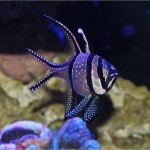
Picking out New Fish for a Marine Aquarium
You have to be careful picking out a new fish for your marine aquarium. The last thing you want to happen is to take your new home and it becomes sick due to a disease or something else that you could have identified at the store. There are a few things to watch for that will give you an indication there could potentially be a problem with a fish. These indicators to watch for are both in the appearance of the fish as well as how the fish behaves.
Selecting a healthy fish is not a hard thing to do but it does require patience and restraint. If you are not 100% sure that a fish is healthy , it would likely be best not to buy it. The below are the basic rules of thumb that I follow. Keep in mind, following a process like this can never be 100% safe or 100% accurate, so you should still quarantine new additions before add them to your display tank.
Continue reading
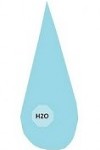
Mixing Saltwater
Mixing saltwater
Perhaps the most vital part of the marine aquarium is properly mixing salt water.
The reefs of the world are the most stable environments on Earth, despite human activity and pollution tipping that balance in the reefs of the Caribbean Sea and the east coast of Florida. The natural reef water possesses a set ratio of salts, minerals and trace elements. Temperatures vary little, and in most reefs, not at all.
Several different manufacturers product synthetic salts that posses the proper ratio of minerals and trace elements, but there are some brands that are superior to others in that respect. Seek out impartial reviews to give you an idea which salt mix to buy.
Natural Sea Water (NSW) contains 11 major elements and a handful of trace elements. To simulate that in our marine tanks one must make every effort to be as close to the natural world as possible.